Discover the Mysteries of Ming Xiaoling Mausoleum: A Journey Through Time

An Essential Guide to Visiting Ming Xiaoling Mausoleum
Nestled in the serene embrace of Nanjing’s Purple Mountain, the Ming Xiaoling Mausoleum stands as a majestic testament to the grandeur of the Ming Dynasty. This UNESCO World Heritage Site is not just a burial ground; it is a sprawling complex that weaves together nature, history, and art in a way that few other places can. One of its most captivating features is the Sacred Way, a magnificent pathway adorned with imposing stone statues that guard the entrance to the tomb. This grand avenue, lined with ancient trees and mythical creatures, invites visitors to step back in time and connect with the legacy of Emperor Hongwu, the founder of the Ming Dynasty.
In this guide, you will discover essential information that will enhance your visit to the Ming Xiaoling Mausoleum. We will explore the history and significance of this remarkable site, provide practical tips for navigating the expansive grounds, and highlight the nearby attractions that enhance your experience. Whether you’re a history buff, an architecture enthusiast, or simply a curious traveler, the Ming Xiaoling Mausoleum promises an unforgettable journey into China’s rich past. Prepare to be captivated by its beauty and grandeur as you embark on this adventure!
In This Guide
- An Essential Guide to Visiting Ming Xiaoling Mausoleum
- The Rich History and Legends of Ming Xiaoling Mausoleum
- Main Highlights: What You Absolutely Can’t Miss
- Planning Your Visit: A Practical Guide
- Tickets: Prices, Booking, and Tips
- How to Get There: A Complete Transportation Guide
- Local Cuisine and Accommodation Nearby
- Frequently Asked Questions
- Final Thoughts on Your Trip
The Rich History and Legends of Ming Xiaoling Mausoleum
A Glimpse into the Past: The Ming Xiaoling Mausoleum
The Ming Xiaoling Mausoleum, nestled at the foot of the Purple Mountain in Nanjing, is a captivating testament to the grandeur of the Ming Dynasty. This UNESCO World Heritage site is not only a burial ground for the first Ming emperor, Zhu Yuanzhang, but also a rich tapestry of history and legend, drawing visitors from around the globe.
The Founding of the Ming Dynasty
Constructed between 1381 and 1405, the mausoleum serves as the final resting place for Emperor Hongwu, who founded the Ming Dynasty. After a turbulent rise to power, Zhu Yuanzhang chose this serene location to symbolize the stability and prosperity he aimed to bring to China. The mausoleum’s design reflects the emperor’s vision, incorporating elements of traditional Chinese architecture blended with the natural landscape, creating a harmonious and tranquil environment.
Architectural Marvel
The mausoleum spans over 100 hectares and features a series of impressive structures, including the Spirit Way, which is lined with majestic stone animals and human figures that represent the imperial power. The intricately carved stone statues are not merely decorative; they hold deep significance, believed to guide and protect the emperor’s spirit in the afterlife.
The main tomb, which lies beneath a large mound, is an architectural masterpiece, showcasing the skill and artistry of the craftsmen of the time. The site is often described as a quintessential representation of Ming architecture, characterized by its symmetry, grand scale, and intricate details.
Legends of the Tomb
As with many historic sites, the Ming Xiaoling Mausoleum is steeped in legends. One of the most famous tales surrounds the construction of the mausoleum itself. It is said that Zhu Yuanzhang, in his quest for immortality and to ensure his legacy, consulted with countless geomancers to find the perfect location. The belief in feng shui played a vital role, as the emperor sought a site that would harmonize with the surrounding environment, ensuring peace and prosperity for generations to come.
Another popular legend involves the Spirit Way, where it is believed that the stone beasts and figures serve a dual purpose—both as guardians of the emperor’s spirit and as protectors against evil spirits. Local lore suggests that if a visitor stands before these statues and makes a sincere wish, it may just come true, adding a touch of magic to the solemnity of the site.
The Mausoleum’s Legacy
The importance of the Ming Xiaoling Mausoleum extends beyond its historical significance. As a symbol of one of China’s greatest dynasties, it represents the resilience and cultural richness of the nation. The mausoleum has witnessed numerous historical events, including wars, political upheavals, and cultural revolutions, yet it stands as a reminder of the enduring spirit of the Ming Dynasty.
In recent years, the mausoleum has become a popular destination for both domestic and international travelers, offering a glimpse into China’s imperial past. Visitors are often enchanted not only by the beauty of the site but also by the stories and legends that bring the history to life.
Conclusion
Whether you roam the majestic Spirit Way or stand in awe of the grand tomb, the Ming Xiaoling Mausoleum is a place where history and legend intertwine. It invites travelers to reflect on the past while appreciating the artistry and cultural significance of one of China’s most important historical sites. As you explore this magnificent mausoleum, you may find yourself swept away by its rich history and the captivating legends that continue to resonate through time.
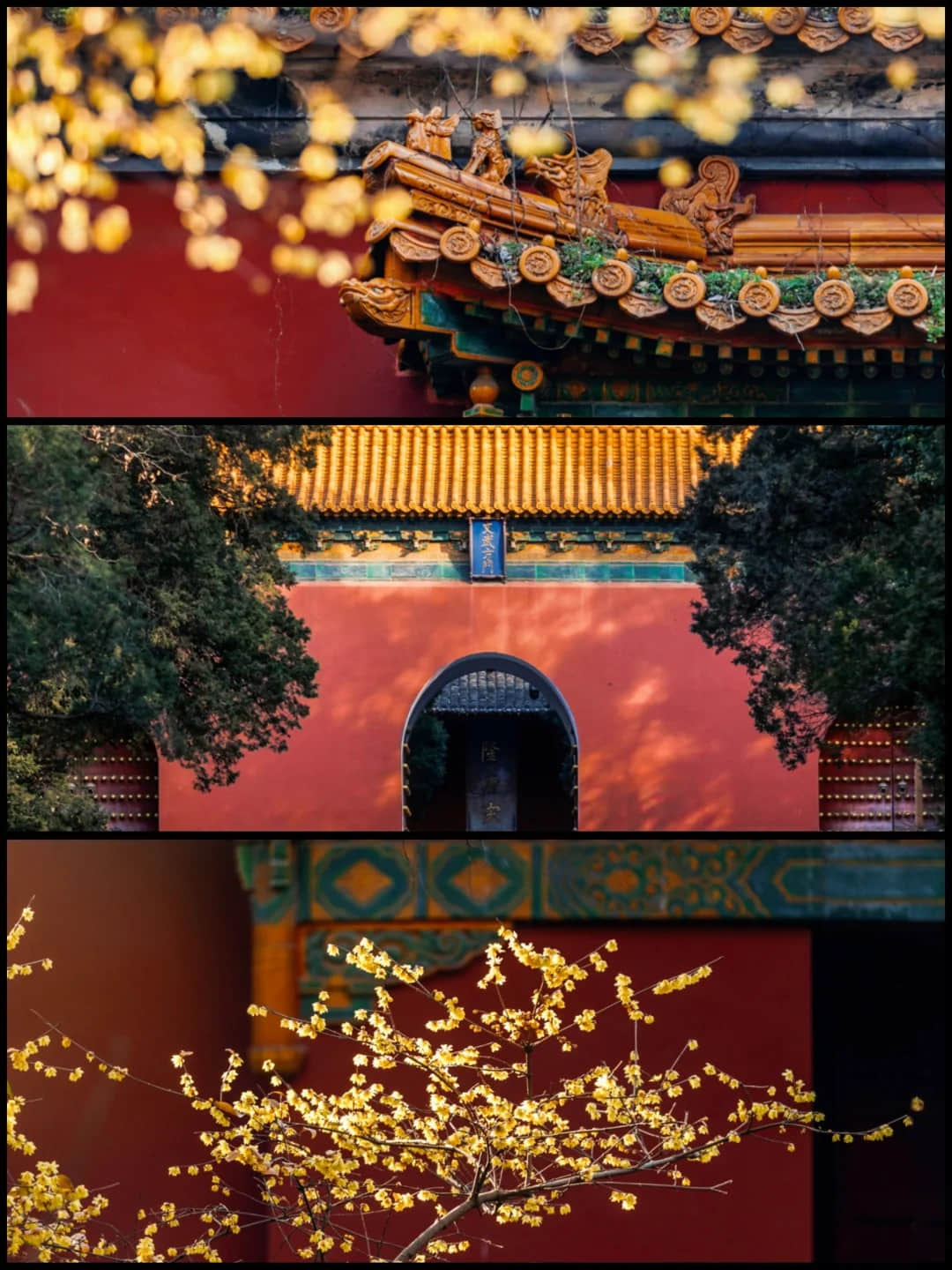
Ming Xiaoling Mausoleum.
Main Highlights: What You Absolutely Can’t Miss
The Grand Entrance: The Sacred Way
As you approach Ming Xiaoling Mausoleum, the first thing that will capture your attention is the Sacred Way (Shendao). This grand pathway, lined with majestic stone statues of mythical creatures and historical figures, sets the tone for your visit. The pathway stretches for nearly a mile, flanked by lush greenery and ancient trees, offering a serene stroll that transports you back in time.
Tip: Arrive early in the morning to enjoy the tranquility and capture stunning photographs with the soft morning light. Be sure to wear comfortable shoes, as you’ll want to take your time exploring this beautiful area.
The Impressive Stone Statues
As you walk along the Sacred Way, stop to admire the impressive stone statues, known as the “Spirit Way Statues.” Each statue serves a purpose, from the fierce lions symbolizing strength to the elegant camels representing wealth. These intricately carved figures are a testament to the artistry of the Ming Dynasty and are sure to leave you in awe.
Tip: Take a moment to read the descriptive plaques next to each statue for a deeper understanding of their significance. Don’t forget to snap pictures—these statues make for a perfect backdrop!
The Tomb of the Hongwu Emperor
At the heart of the mausoleum lies the tomb of the Hongwu Emperor, Zhu Yuanzhang, the founder of the Ming Dynasty. The tomb itself is an architectural marvel, featuring a grand burial mound surrounded by a tranquil environment. The entrance to the tomb is marked by a large stone platform, where you can reflect on the history and legacy of this powerful ruler.
Tip: Access to the tomb is limited, so be sure to check the opening times and plan your visit accordingly. A guided tour can enhance your experience, offering insights into the emperor’s life and the significance of the site.
The Serene Surroundings: The Linggu Temple
Just a short walk from the mausoleum, you’ll find the Linggu Temple, an oasis of peace and spirituality. This historic temple complex, with its stunning pagoda and tranquil gardens, offers a perfect contrast to the grandeur of the mausoleum. The temple is home to beautiful architecture, including the striking Linggu Pagoda, which stands tall against the sky.
Tip: Spend time wandering through the gardens and capturing the beauty of the temple grounds. If you’re feeling adventurous, climb the pagoda for panoramic views of the surrounding area.
The Beautiful Landscape: The Surrounding Park
The mausoleum is nestled within a vast park that is perfect for leisurely strolls amidst nature. With its rolling hills, serene lakes, and vibrant flora, the landscape provides a picturesque setting for picnics or quiet contemplation. The park is also home to various walking trails, making it easy to explore the natural beauty of the area.
Tip: Bring a picnic blanket and some snacks to enjoy a meal surrounded by nature. The best time to visit is during the spring or autumn when the weather is mild, and the scenery is at its most vibrant.
The Rich History: The Memorial Hall
Before you leave, don’t miss the Memorial Hall dedicated to the Ming Dynasty. This hall houses exhibitions that delve into the history, culture, and achievements of the Ming era. Engaging displays and artifacts will enlighten you about the dynasty’s significance in Chinese history.
Tip: Allocate at least an hour for the Memorial Hall. Guided tours are available, providing a more in-depth understanding of the exhibits. Be sure to check for any special exhibitions during your visit.
The Tranquil Reflection: The Nearby Xuanwu Lake
After exploring Ming Xiaoling Mausoleum, take a leisurely stroll to Xuanwu Lake, just a short distance away. This scenic lake is surrounded by walking paths, gardens, and stunning views of the city skyline. It offers a tranquil setting to unwind and reflect on your visit to the mausoleum.
Tip: Rent a bicycle or a paddleboat for a unique perspective of the lake. The sunset views from here are particularly spectacular, making it a perfect ending to your day.
With its historical significance, stunning architecture, and serene natural beauty, a visit to Ming Xiaoling Mausoleum is an unforgettable experience that captures the essence of China’s rich cultural heritage.
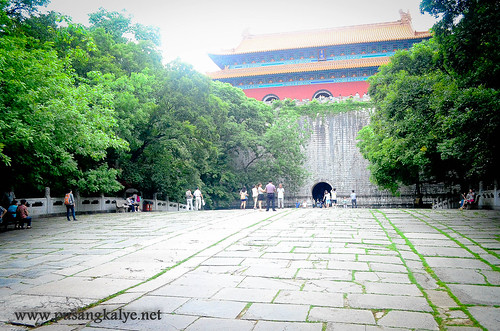
Ming Xiaoling Mausoleum.
Planning Your Visit: A Practical Guide
Best Time to Visit
The Ming Xiaoling Mausoleum is best visited during the spring (March to May) and autumn (September to November) seasons. During these months, the weather is mild and pleasant, making it comfortable for walking through the extensive grounds. Additionally, the blooming flowers in spring and the vibrant foliage in autumn provide stunning backdrops for photography. Avoid visiting during the summer months (June to August) if you prefer to escape the heat, as temperatures can soar, and the site may be crowded with tourists.
Recommended Itinerary
To fully appreciate the beauty and history of the Ming Xiaoling Mausoleum, consider spending approximately 2-3 hours exploring the site. Here’s a suggested itinerary:
- Arrival and Ticket Purchase (30 minutes): Arrive early to avoid crowds. Purchase your tickets at the entrance.
- Explore the Sacred Way (30 minutes): Walk along the impressive pathway lined with stone statues known as the Sacred Way, leading you to the mausoleum.
- Visit the Tomb Area (1 hour): Take your time to explore the tomb itself, including the grand architecture and serene surroundings.
- Stroll Through the Park (30 minutes): After visiting the tomb, enjoy a leisurely walk through the surrounding gardens and parkland, which are perfect for relaxation and reflection.
- Photography (30 minutes): Don’t forget to capture the stunning views and unique details of the site before you leave.
Photography Tips
- Golden Hour: The best times for photography are during the early morning or late afternoon when the soft sunlight enhances the beauty of the mausoleum and its surroundings.
- Wide Angles: Use a wide-angle lens to capture the grandeur of the architecture and the Sacred Way.
- Details Matter: Focus on the intricate carvings and statues along the path for some unique close-up shots.
- Vary Your Angles: Experiment with different angles and perspectives to create dynamic compositions.
What to Wear
Dress comfortably and appropriately for a day of exploration. Here are some suggestions:
- Footwear: Wear comfortable walking shoes, as you’ll be walking on various terrains, including cobblestones and grassy areas.
- Layers: Depending on the season, wear layers that you can easily add or remove. Mornings and evenings can be cooler, while afternoons may get warmer.
- Sun Protection: If visiting during the summer months, bring a hat, sunglasses, and sunscreen to protect yourself from the sun.
Insider Tips
- Visit Early: Arriving right at opening time (7:00 AM) ensures a quieter experience and gives you the opportunity to explore before the crowds descend.
- Combine Your Trip: Pair your visit to the mausoleum with nearby attractions, such as the Sun Yat-sen Mausoleum and the Linggu Temple, for a richer historical experience.
- Local Cuisine: After your visit, treat yourself to a meal at one of the nearby restaurants to sample authentic Nanjing cuisine, such as salted duck or duck blood soup.
- Guided Tours: Consider joining a guided tour for in-depth knowledge about the history and significance of the mausoleum. Many local tour companies offer flexible private tours tailored to your interests.
- Respect the Site: As a cultural heritage site, maintain respect by refraining from loud conversations and littering. Enjoy the tranquility and history that the Ming Xiaoling Mausoleum offers.
With careful planning and these tips in mind, your visit to the Ming Xiaoling Mausoleum will be both enlightening and enjoyable!
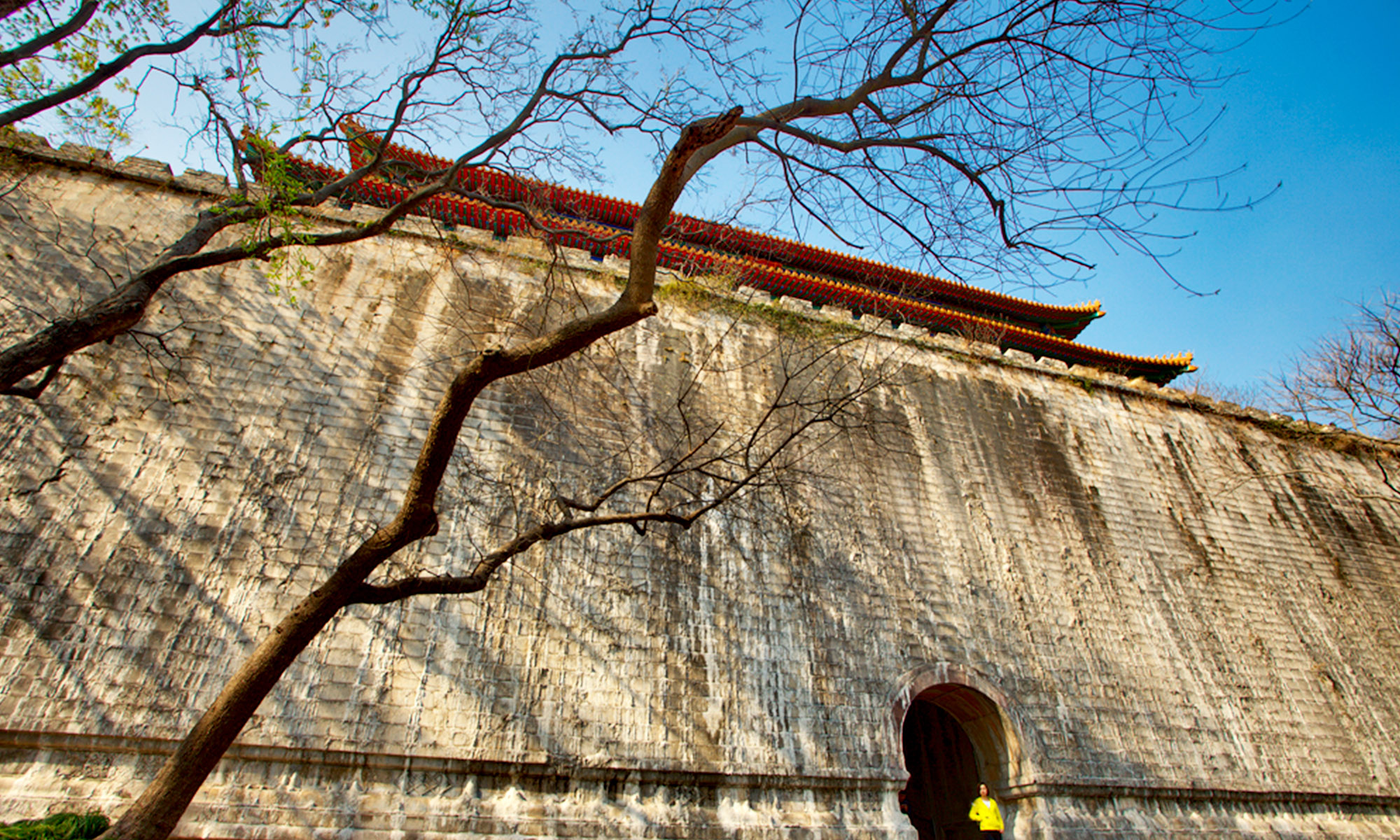
Ming Xiaoling Mausoleum.
Tickets: Prices, Booking, and Tips
When planning your visit to the Ming Xiaoling Mausoleum, it’s essential to know about ticket prices and how to secure your entry. Below is a concise overview of ticket options available for this breathtaking historical site.
| Ticket Type | Price (CNY) | Includes |
|---|---|---|
| Adult Ticket | 70 | Entry to the mausoleum and surrounding park. |
| Student Ticket | 35 | Entry for students with valid ID. |
| Senior Ticket | 35 | Entry for seniors aged 60 and above. |
| Family Pass (2 Adults, 2 Children) | 150 | Entry for two adults and two children under 18. |
Booking Information
Tickets for the Ming Xiaoling Mausoleum can be purchased both on-site and online. However, to ensure a hassle-free experience, especially during peak tourist seasons, it’s highly advisable to book your tickets in advance.
You can reserve your tickets through the official website or popular travel platforms that offer advance booking options. This not only helps you avoid long queues but also allows you to plan your visit at a time that best suits your schedule.
Tips for a Great Visit
- Timing: The mausoleum is open daily from 7:00 AM to 8:00 PM. Early morning visits are ideal for avoiding crowds and enjoying the serene atmosphere.
- Guided Tours: Consider joining a guided tour for a deeper understanding of the site’s rich history and architectural significance.
- Prepare for Walking: The pathways leading to the mausoleum are picturesque but can be lengthy. Wear comfortable shoes and bring water to stay refreshed.
By following these tips and booking your tickets in advance, you can ensure that your visit to the Ming Xiaoling Mausoleum is both enjoyable and memorable.
How to Get There: A Complete Transportation Guide
Traveling to Ming Xiaoling Mausoleum: Your Complete Transportation Guide
Exploring the historic Ming Xiaoling Mausoleum, a UNESCO World Heritage site, is a must for any visitor to Nanjing. Nestled at the foot of Purple Mountain, this stunning imperial tomb is not only rich in history but also surrounded by picturesque landscapes. Below is a comprehensive guide on how to reach this majestic site and navigate the surrounding area.
From the Nearest Major City
Arriving from Nanjing City Center
-
By Metro: The easiest way to reach Ming Xiaoling Mausoleum is via the Nanjing Metro. Take Line 2 and disembark at the “Xiaoling Tomb” (明孝陵) station. From there, it’s a pleasant 20-30 minute walk to the mausoleum entrance. The metro ride typically takes around 30-40 minutes and costs approximately ¥4 (around $0.60).
-
By Bus: Several bus lines (such as 9, 34, 82, and 204) connect Nanjing’s city center to the mausoleum area. The bus journey can take anywhere from 40 minutes to an hour, depending on traffic, and costs about ¥2 (around $0.30).
-
By Taxi: For a more direct option, a taxi ride from the city center to the mausoleum will take about 20-30 minutes and may cost between ¥30 and ¥50 (approximately $4.50 to $7.50). This is a convenient choice for those traveling in groups or with heavy luggage.
From Shanghai
-
By Bullet Train: If you are coming from Shanghai, the bullet train is an efficient option. Trains from Shanghai Hongqiao Railway Station to Nanjing South Railway Station run frequently, taking about 1.5 to 2 hours. Ticket prices range from ¥150 to ¥300 (approximately $22 to $45) depending on the class. Once you arrive at Nanjing South, transfer to Metro Line 1 to reach the city center, then switch to Line 2 for the mausoleum.
-
By Bus: Longer yet less expensive, intercity buses from Shanghai to Nanjing take about 3 to 4 hours and cost around ¥100 (approximately $15). Buses depart from various locations in Shanghai and arrive at Nanjing’s central bus station. From there, you can take a taxi or public transport to the mausoleum.
Getting Around the Scenic Area
Once you arrive at Ming Xiaoling Mausoleum, the expansive grounds offer a variety of paths and scenic viewpoints.
-
On Foot: Walking is the best way to appreciate the mausoleum’s architecture and the surrounding natural beauty. The pathways are well-maintained, and the walk from the entrance to the tomb is lined with impressive stone statues and beautiful scenery. Plan on spending at least 1 to 2 hours exploring the area.
-
Bicycle Rentals: If you’re looking for a faster way to explore, consider renting a bike. There are several rental stations near the entrance, and cycling through the area will allow you to cover more ground while enjoying the fresh air.
-
Guided Tours: Many visitors opt for guided tours that often include transportation from the city center. These tours can provide valuable insights into the history and significance of the mausoleum, and typically last between 4 to 8 hours. Prices vary depending on the inclusions, but expect to pay around ¥200 to ¥300 (approximately $30 to $45).
Essential Tips
-
Best Time to Visit: The mausoleum is open daily from 7:00 AM to 8:00 PM, but visiting in the early morning or late afternoon can help you avoid crowds and enjoy cooler temperatures, especially during the summer months.
-
Wear Comfortable Shoes: The terrain can be hilly and uneven, so wear comfortable shoes for walking.
-
Stay Hydrated: Bring water, especially during warmer months, as you’ll be walking quite a bit.
Whether you arrive from nearby Nanjing or make a day trip from Shanghai, Ming Xiaoling Mausoleum promises a captivating glimpse into China’s imperial past amidst a stunning natural setting. Enjoy your visit!
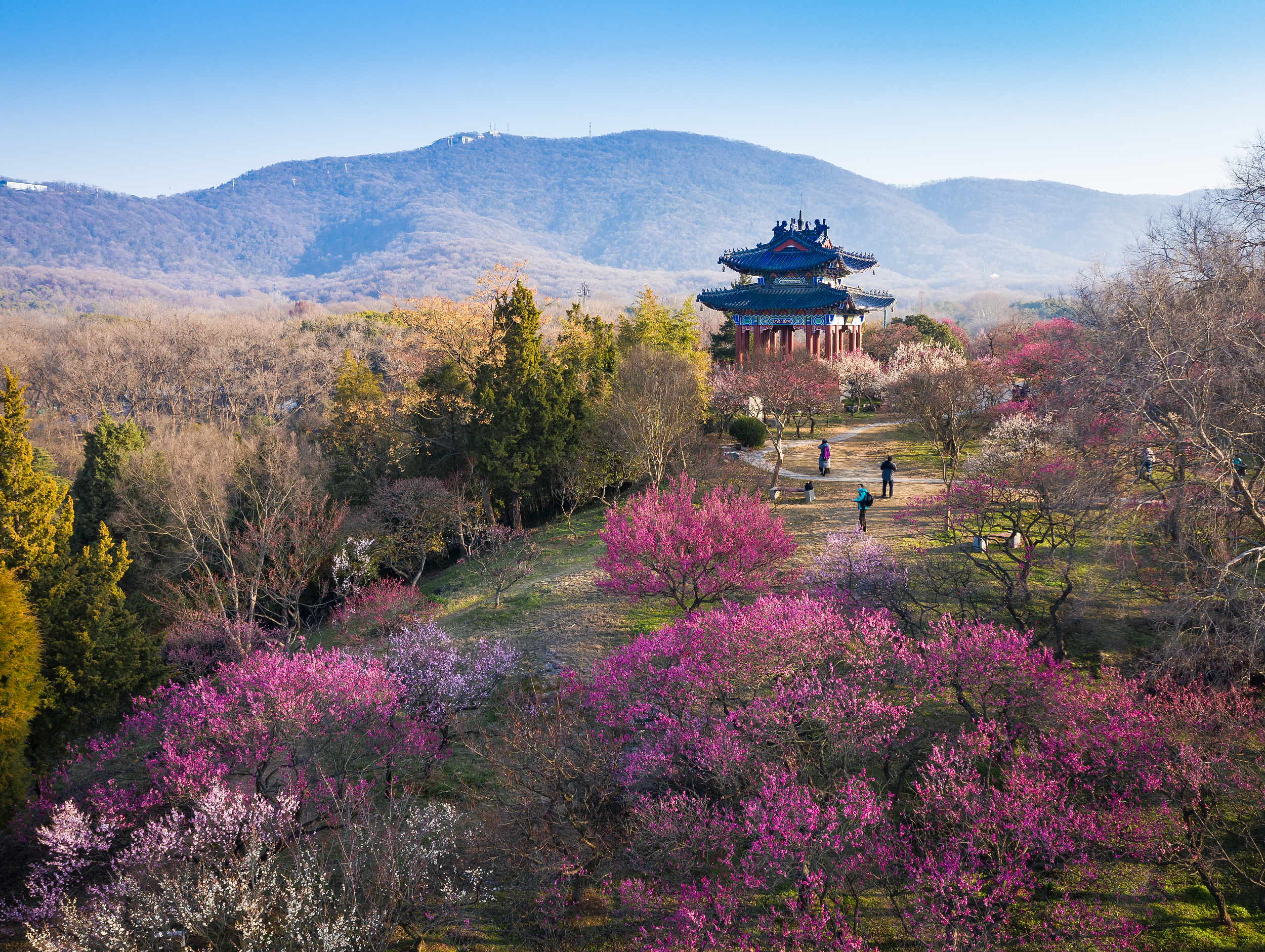
Ming Xiaoling Mausoleum.
Local Cuisine and Accommodation Nearby
Exploring the Ming Xiaoling Mausoleum in Nanjing is not just about soaking in the rich history; it’s also an opportunity to indulge in the local cuisine and find a cozy place to stay. Here’s a guide to some delightful dishes and accommodations that will enhance your visit.
Local Delicacies
-
Nanjing Salted Duck (盐水鸭)
This iconic dish features tender duck meat marinated in a unique blend of salt, spices, and herbs. The result is a flavorful, succulent dish that’s often served cold, making it a refreshing choice, especially during warmer months. -
Duck Blood Soup (鸭血粉丝汤)
A comforting and hearty dish, this soup combines slices of duck blood with vermicelli noodles and tofu, all simmered in a rich, savory broth. It’s a staple in local food stalls and a must-try for those looking to experience authentic Nanjing street food. -
Lion’s Head Meatballs (狮子头)
These large, juicy meatballs made from ground pork are flavored with ginger and scallions, then stewed until tender. Often served in a savory broth with vegetables, they are a delightful representation of Jiangsu cuisine. -
Jiangsu-Style Dumplings (江苏小笼包)
Known for their delicate wrappers and juicy fillings, these steamed dumplings are filled with minced meat and savory broth. Enjoy them with a splash of soy sauce and a hint of vinegar for an unforgettable bite.
Places to Stay
-
Luxury: InterContinental Nanjing
Overlooking the Yangtze River, this luxurious hotel offers opulent rooms, world-class amenities, and exquisite dining options. Its proximity to attractions like the Ming Xiaoling Mausoleum makes it a prime choice for those seeking an upscale experience. -
Boutique: The Sifang Hotel
Nestled in a tranquil garden setting, this boutique hotel combines traditional Chinese architecture with modern design. Each room is tastefully decorated, providing a cozy atmosphere, and the hotel’s on-site restaurant serves a delightful mix of local and international dishes. -
Budget: Nanjing 1912 Business Hotel
For travelers on a budget, this hotel offers comfortable accommodations at an affordable price. Located within easy reach of public transport and local attractions, it provides basic amenities and a friendly atmosphere, making it a great base for exploring the city.
Whether you’re savoring the flavors of Nanjing or resting in a comfortable bed after a day of exploration, the area surrounding the Ming Xiaoling Mausoleum offers a rich blend of culinary and lodging experiences that cater to every traveler’s needs.
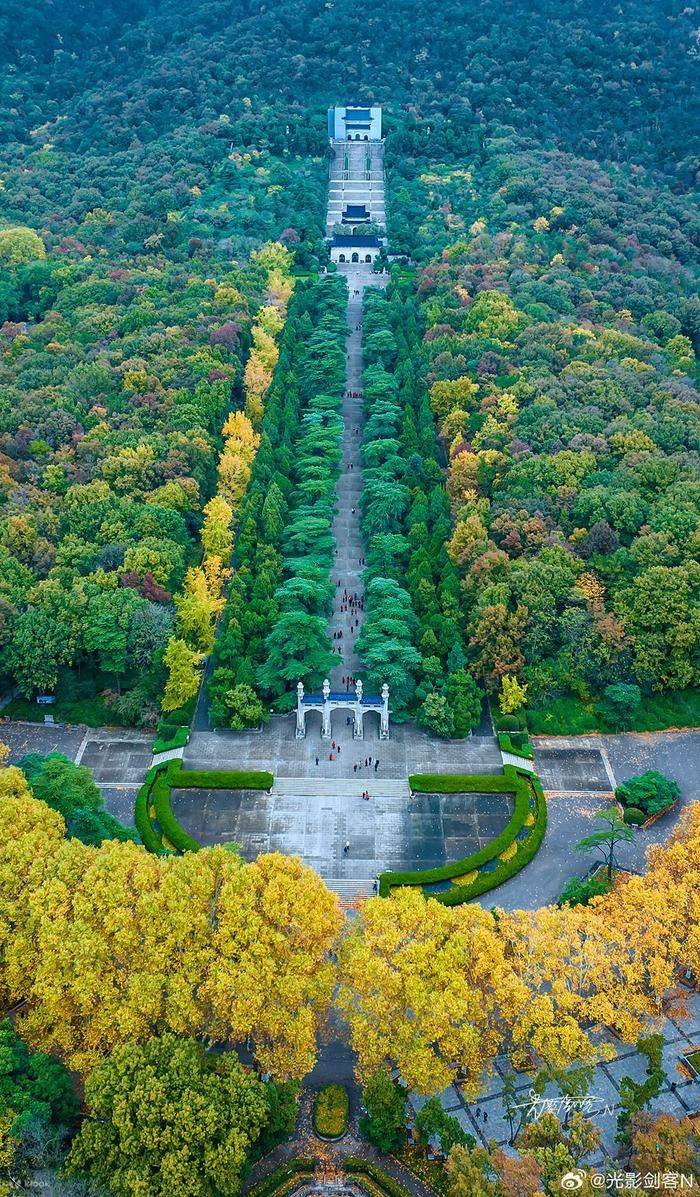
Ming Xiaoling Mausoleum.
Frequently Asked Questions
Frequently Asked Questions
1. Is Ming Xiaoling Mausoleum suitable for children and the elderly?
Yes, the mausoleum is suitable for both children and the elderly. The site is well-maintained and features wide paths that are accessible for strollers and wheelchairs. However, some areas may involve moderate walking, so it’s wise to ensure that elderly visitors are comfortable with a bit of walking.
2. Are there English signs and guides available?
Yes, visitors will find English signage throughout the mausoleum, making it easier to navigate and understand the historical significance of the site. Additionally, audio guides in English are often available for rent, enhancing your visit with detailed information.
3. How much time should I plan for my visit?
Plan to spend about 2 to 3 hours at Ming Xiaoling Mausoleum. This duration allows ample time to explore the pathways, admire the impressive stone statues, and take in the serene natural surroundings. If you wish to take photos or relax in the park, consider allocating additional time.
4. What are the opening hours for Ming Xiaoling Mausoleum?
The mausoleum is open daily from 7:00 AM to 8:00 PM. It’s recommended to arrive early in the day for a quieter experience and to enjoy the beautiful morning light.
5. Is there an entrance fee?
Yes, there is an entrance fee to visit Ming Xiaoling Mausoleum. The current fee is approximately 70 RMB (around $10 USD), but prices may vary, so it’s best to check the latest information before your visit.
6. How do I get to Ming Xiaoling Mausoleum?
Ming Xiaoling Mausoleum is conveniently located in the Xuanwu District of Nanjing. You can reach it by public transport, such as buses or the metro, or opt for a taxi. Many guided tours also include transportation to and from the site.
7. Are there facilities like restrooms and refreshment areas available?
Yes, there are restrooms available on-site, as well as designated areas for refreshments. You can find small vendors selling snacks and drinks, but it’s a good idea to bring water, especially during warmer months.
8. Can I take photographs inside the mausoleum?
Photography is allowed in most areas of the mausoleum complex, but be mindful of any signs indicating restrictions. The stunning architecture and beautiful landscapes provide excellent opportunities for memorable photos!
Final Thoughts on Your Trip
As you reflect on your visit to the Ming Xiaoling Mausoleum, allow yourself to be captivated by the serene beauty and historical significance of this imperial tomb. The majestic pathway lined with stone statues invites you to embark on a journey through time, where the legacy of the Ming Dynasty whispers in the rustling leaves and echoes in the tranquil surroundings.
The mausoleum is not merely a burial site; it is a testament to an era marked by grandeur and elegance, showcasing quintessential elements of Chinese culture that resonate deeply with visitors from around the globe. Whether it’s the intricate architecture, the lush greenery enveloping the site, or the sense of peace that permeates the air, each moment spent here is a reminder of the rich tapestry of history that defines Nanjing.
As you conclude your exploration, carry with you the spirit of this place—an invitation to delve deeper into the stories of the past and an encouragement to embrace the beauty of the present. Whether you’re a history enthusiast or a casual traveler, the Ming Xiaoling Mausoleum is sure to leave an indelible mark on your journey through China. Embrace these memories and let them inspire your next adventure!